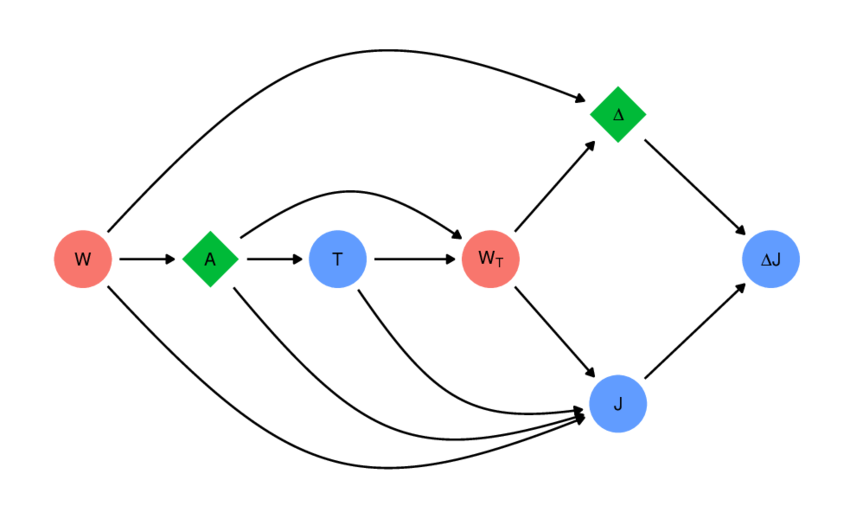Hashgraph Consensus Unveiled: The Future of Blockchain Efficiency?
Imagine a world where blockchain is fast and fair, without all the lag. That’s what hashgraph consensus in blockchain could bring to the table. There’s a new player in town that’s shaking up the digital ledger tech game. It’s not your grandad’s blockchain; it’s the speedier, sleeker hashgraph. Is it just hype or the real deal? Dive in as we tear down the complex tech and make it easy for you. We’ll look at how this fresh system outdoes the old guard, explore its unique bits, and unpack what it really means for smart contracts and apps. It’s time to get clued in on the blockchain revolution’s next act.
Demystifying Hashgraph: The Next-Generation DLT
Understanding the Hashgraph Data Structure
Think like you’re peering into the future of tech. Blockchain is just like those old flip-phones. Hashgraph is the newest smartphone. It’s cool, fast, and everyone wants to know about it.
So, what’s the buzz about Hedera Hashgraph? It all starts with how it stores info. Unlike blockchain, hashgraph doesn’t stack up blocks of data. It weaves them together. This neat web of info is a real game-changer. It’s like everyone in a room whispering secrets to each other. Soon, everybody knows everything. This quick chat is what we call the Gossip about Gossip protocol.
For those who love big words, it’s a directed acyclic graph (DAG). It’s how hashgraph knots together its data. In simple terms, it creates a history of who said what and when. It’s super fast, because there’s no line. Every piece of data zips by without waiting.
Directed Acyclic Graph (DAG): The Foundation of Hashgraph
Now, let’s break down DAG. It might sound fancy, but it’s easy to get. Picture a family tree. It branches out but never loops back. That’s what acyclic means – no going in circles. The “directed” part? It’s like one-way streets in your hometown. Information only travels in one direction.
DAG is why hashgraph tech is quick on its feet. It doesn’t have to double-check its steps like a traditional blockchain. This saves a heap of time. It’s like if you could teleport to school instead of walking or catching the bus.
Hedera Hashgraph has this cool way of reaching an agreement – virtual voting. Imagine not needing to actually raise hands in class to take a vote. You just know who’d vote for what. That’s how Hedera makes decisions fast without messing up trust.
So, no more waiting around for ages for your turn in blockchain’s line. The hashgraph way says everyone goes at once, and it still works out fine. It’s not just fast. It’s also really good at playing fair and stopping cheats. They call this Byzantine Fault Tolerance.
Diving into this new-world tech is thrilling. We’re talking about lightning-fast transactions, top-notch security, and a whole new way to see ledgers. The best part? You don’t need to be a tech whiz to see why it’s big news.
Sure, there’s a lot of ground to cover with hashgraph cryptocurrency, Hedera’s HBAR coin, and even hashgraph patents. But, understanding that web of whispers and big family trees puts you ahead.
Now, what about your chatting item, like your phone or laptop? Those are nodes in hashgraph lingo. They gossip to make sure the right info gets around quick. No secrets here, just super smart node communication.
Talking tech can be fun, right? Hashgraph is a thrilling peek at what’s next. It’s like catching the first glimpse of a blockbuster movie trailer. You can spot the stars – fast consensus, sturdy network security, and a green light for all those smart contracts.
Hashgraph is shaking up everything, and it’s pretty neat to watch. It’s like an epic show where blockchain alternatives are stepping up in style. And the hero here? It’s all about that hashgraph efficiency everyone’s chatting about.
How Hashgraph Outperforms Traditional Blockchain
Speed and Fairness: Analyzing Hashgraph vs Blockchain
When we talk about how hashgraph technology stands up against blockchain, speed and fairness take the spotlight. Unlike some blockchain alternatives, hashgraph leapfrogs ahead by using something called Gossip about Gossip. It’s a smart way nodes share data, which is like kids whispering secrets super fast in class.
Imagine everyone taking notes about these whispers – that’s virtual voting. It lets each node guess how the others will vote. This system is so quick it allows Hedera Hashgraph to handle loads of transactions in seconds. Meanwhile, some blockchains might just be stretching and yawning.
Fairness is another win for hashgraph. In a blockchain, miners might choose transactions that pay the most fees. But hashgraph gives everyone a fair turn. Like playing a game where everyone follows the same rules, no favorites. This means every user gets a fair chance when sending hashgraph transactions.
Consensus Mechanisms: Blockchain Transaction Speed vs Hashgraph Efficiency
Now, let’s dive into the nitty-gritty of consensus mechanisms. Blockchain is like a single-lane bridge where cars line up to cross. They move, but not too fast. On the other hand, hashgraph is like a superhighway with cars zooming past. This difference is why hashgraph can reach what we call fast consensus.
Hedera Hashgraph uses the hefty power of asynchronous Byzantine Fault Tolerance (BFT). This is a fancy term for a network’s ability to work fine even if some nodes are up to no good. It’s the gold standard of network security, making sure nothing goes wrong even if there are a few bad apples.
In blockchains, it takes time to add each block of transactions. But hashgraph doesn’t wait. It builds consensus on the fly, without slowing down.
The HBAR coin, which runs on Hedera Hashgraph, benefits from all this speed and security. Users notice less wait time and more doing time.
So, folks, hashgraph vs blockchain really comes down to being nimbler on your feet. It’s about racing through transactions and treating everyone fairly, without breaking a sweat. Hashgraph technology does this dance beautifully, setting the stage for what many see as the future of distributed ledger technology (DLT).
Remember, while blockchains were the first to the DLT party, they may not be the last to rule the dance floor. Innovations like hashgraph are showing us there’s more than one way to groove in the world of cryptocurrency platforms.
Unique Features of Hashgraph Consensus
Gossip About Gossip Protocol and Virtual Voting
Let’s dive into how Hedera Hashgraph chats it up to reach agreement. This chat, or “Gossip about Gossip” protocol, is like a game of telephone. Each member tells another member what they know, over and over. Soon, every member knows everything. This way, the hashgraph can spread information lightning-fast.
Now, imagine voting without actual votes. That’s “virtual voting”. Each member guesses how others would vote, based on the gossip. It’s like playing a game of Clue, but instead of asking questions, you piece the puzzle together from what you’ve heard. This method lets Hedera reach a fast consensus without any heavy lifting.
Ensuring Network Security and Byzantine Fault Tolerance
You might wonder how hashgraph keeps the bad guys out. Well, it uses a clever trick called Byzantine Fault Tolerance, or BFT for short. This is like having a group of guards who watch out for liars. If someone tries to cheat, the system spots it and keeps running smoothly. Even better, Hedera Hashgraph uses asynchronous BFT. That’s a top-notch guard that doesn’t need to sync watches to catch the cheat.
As you can see, Hedera’s unique way ensures that transactions are safe and sound. It keeps the truth straight, even if some members are up to no good. This makes it a strong option when you’re weighing up blockchain alternatives. It’s like having a superhero safeguarding your digital world.
By using these smart methods, Hedera Hashgraph is carving a place for itself. It stands out from other cryptocurrency platforms with its unique approach to reaching agreement and robust network security. It’s a step forward in the quest for a more efficient and secure distributed ledger technology.
The Real-World Applications and Limitations of Hashgraph
Implementing Smart Contracts and dApp Development on Hedera Hashgraph
Let’s unlock the world of Hedera Hashgraph, where smart contracts live and breathe. This is a fresh take on blockchain, guys. It’s like when cell phones first got smart. Suddenly we had a whole new game. Hedera Hashgraph does that for digital contracts and apps. Think of smart contracts as super-smart deals that run themselves. No one can mess with them once they’re set. This keeps things fair and safe.
Here’s the deal: Hedera Hashgraph makes these smart contracts really zip. It uses less juice, so we save on energy. It ticks like clockwork, never skipping a beat. That’s music to the ears of dApp developers. They want to make cool apps without a hitch. They are like wizards, conjuring up digital magic for us to use. They build everything from games to ways to send money around the globe.
But it’s no easy trek in the wild of tech. One minute you’re on top; next, there’s a new sheriff in town. For Hedera, it means they got a head start. Now, they need to keep running fast to stay ahead. They’ve got to dodge the bumps and barriers to keep their edge.
Hashgraph Scalability and Governance: Current and Future Challenges
“Go big or go home,” they say, and Hedera Hashgraph listens. It aims to scale up, welcoming more users and transactions. But as it grows, the going gets tough. Its roadmap is clear but full of challenges. Like a growing city, it needs to add roads without causing jams. It’s really about having space for everyone.
Hedera has bigwigs deciding on its rules. They are like a council that guides this tech ship. As new problems pop up, they must find smart ways to fix them. They need to keep everything secure and running smooth. But too much power in too few hands? That could cause trouble. It’s a tightrope walk between control and freedom.
Governance is about making sure Hedera plays fair. The rules need to work for everyone, not just the few. It’s like a game where if the rules are bad, no one wants to play. And with tech this neat, we sure want to keep playing.
So here we are, faced with an exciting yet bumpy road ahead for hashgraph technology. It’s like a rocket that just took off. Now we buckle up and see just how high it can fly. We’re in it for the long haul, watching the marvel of Hedera Hashgraph unfold.
In this post, we’ve peeled back the layers of hashgraph, a new type of distributed ledger tech. We started by breaking down what hashgraph is and how it’s built on a Directed Acyclic Graph. We then compared its speed and fairness with traditional blockchain, showing why hashgraph might be the new go-to for some tech folks.
We dug into hashgraph’s unique gossip protocol and how it helps make decisions fast and keeps the network safe from fault. Next, we looked at how real businesses can use hashgraph for smart contracts and apps, but also talked about the hurdles it still faces.
So, here’s the deal: hashgraph has a lot going for it. It’s swift, it plays fair, and it’s building a rep for security. Still, it’s got some kinks to iron out before it can take over the blockchain world. But for tech enthusiasts and forward-thinkers, hashgraph is definitely worth keeping an eye on.
Q&A :
What is Hashgraph Consensus in Blockchain Technology?
Hashgraph consensus is an alternative to traditional blockchain technology, employing a unique data structure and consensus mechanism to achieve a fast, fair, and secure digital ledger system. Unlike blockchain, which uses a chain of blocks to store transaction data, hashgraph utilizes a directed acyclic graph (DAG) for a more efficient process allowing for greater scalability and consensus without the need for proof-of-work (PoW).
How Does Hashgraph Differ from Traditional Blockchain?
Hashgraph differs from traditional blockchains primarily in its structure and consensus mechanism. While blockchain relies on a linear sequence of blocks, hashgraph uses a DAG, where multiple branches of transactions can coexist and be woven together, leading to potentially higher throughput and efficiency. Moreover, hashgraph employs a gossip-about-gossip protocol combined with virtual voting to reach consensus, which can be more energy-efficient than PoW and proof-of-stake (PoS) methods used by conventional blockchains.
What are the Key Advantages of Hashgraph Consensus?
The key advantages of hashgraph consensus include enhanced speed, due to its ability to process many transactions in parallel; improved fairness, as the time-stamping approach reduces the risk of manipulating transaction order; and increased security, with its consensus algorithm purported to achieve asynchronous Byzantine Fault Tolerance (aBFT), one of the highest levels of security in distributed systems.
Is Hashgraph More Efficient than Traditional Blockchain?
Hashgraph is often touted as being more efficient than traditional blockchain due to its faster transaction speeds and lower energy requirements. This efficiency stems from the gossip protocol and the absence of the energy-intensive mining process found in some blockchain networks. However, the efficiency can also vary depending on the specific use case and network implementation.
Can Hashgraph Consensus Achieve Mass Adoption in Blockchain?
The potential for hashgraph consensus to achieve mass adoption hinges on its scalability, speed, and security advantages. However, mass adoption also depends on network effects, developer and enterprise support, and the ability to interoperate with other blockchain and traditional systems. While hashgraph shows promise, it still faces competition from emerging and established blockchain platforms.


